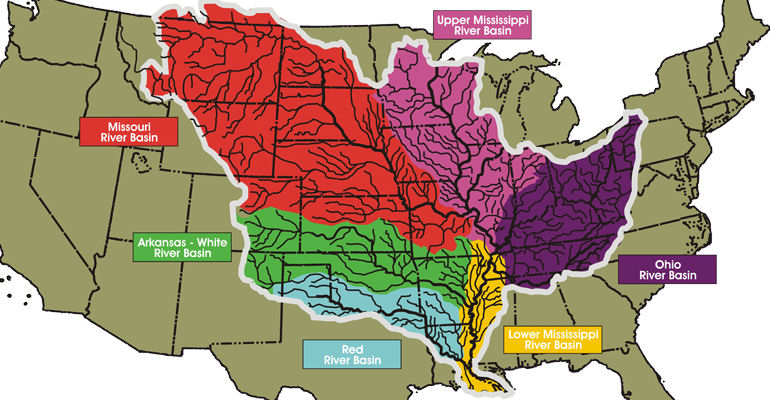Court dismisses setting pollution diet for Mississippi River Basin
District court confirms EPA’s desire for states to take the lead on Clean Water Act implementation of nitrogen and phosphorus reduction strategies.

A federal court Thursday dismissed a lawsuit by environmental activists that would have forced the U.S. Environmental Protection Agency to impose stringent nutrient standards on farmers in the Mississippi River Basin, the world’s second largest, draining nearly 2 million square miles in 31 states.
The ruling continues to grant control of nitrogen and phosphorus reduction management strategies in the hands of the states, rather than the federal EPA.
The group Mississippi River Collaborative filed a 73-page petition with the EPA on July 30, 2008 asking the Agency use its Clean Water Act authority to establish those criteria for Mississippi River Basin states – as it had promised it would do back in 1998 if states failed to act by 2001 – and TMDLs for the Mississippi River and the Gulf of Mexico. They said the action was needed “when it became evident states were not going to set numeric nutrient criteria.” EPA denied their petition in 2011 and MRC sued EPA in March 2012.
EPA refused to make a finding on the science that federal standards aren’t necessary, but instead made a decision not to look at that question right now. American Farm Bureau Federation general counsel Ellen Steen said EPA recognized the better course of action was to continue to allow states to be in the lead. She said EPA essentially said, “States are working on the issues, addressing issues, they’re performing their role and it would be bad policy to overstep states at this time.”
The National Pork Producers Council, AFBF and other agricultural groups and business organizations challenged the regulation in federal court, but it was upheld.
Environmental groups wanted the agency to impose regulations on the amount of nitrogen and phosphorous that could be in waters in the basin. The Clean Water Act assigns responsibility for such pollution control to the states. EPA did set so-called Total Maximum Daily Loads (TMDL) for the Chesapeake Bay and its 64,000-square-mile watershed, regulating mostly farm and agricultural storm water runoff.
The environmental groups claimed the agency’s denial was arbitrary, capricious and not grounded in the [clean water] statute, arguing that EPA was required to make a determination on whether to promulgate a regulation based on scientific data. The U.S. District Court for the Eastern District of Louisiana disagreed and granted EPA’s motion to dismiss the case.
NPPC said it organized and lead a coalition of 44 state and national agricultural groups that intervened as parties in the litigation to defend EPA’s initial denial of the rulemaking petition and prevent a backroom, sweetheart “sue-and-settle” agreement between the Obama administration and environmentalists such as the kind that lead to the Chesapeake Bay TMDL regulation.
Steen noted though the judge did leave the door open if progress and actual improvements in water quality isn’t realized. “The time may come when EPA no longer reasonably let states remain in the lead,” she said. “I think AFBF and all organizations will need to redouble their efforts to help generate programs and assistance for farmers to do the good work they want to do and get those right practices in place to see those improvements.”
About the Author(s)
You May Also Like





